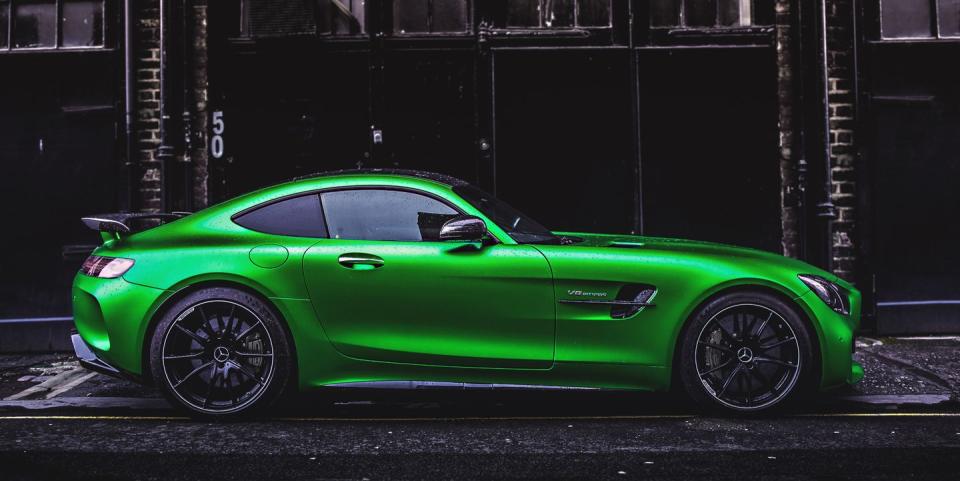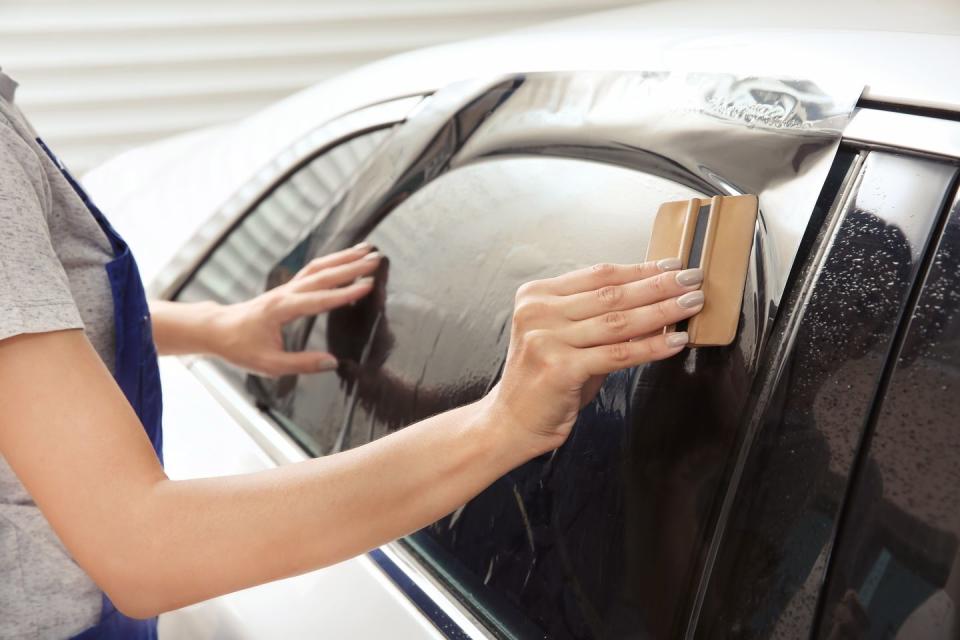Car Window Tinting: Benefits, How-Tos, and the Law

"Hearst Magazines and Yahoo may earn commission or revenue on some items through the links below."
Window tinting refers to the process of applying a thin laminate film to a vehicle's glass in order to darken it. The reasons people choose to tint the windows of an automobile vary. These might include privacy or security; protection from UV rays including UVA, the ones responsible for causing skin cancer; and reducing solar gain (interior heat) and thus incrementally improving fuel economy; and cutting down on glare from the sun. Of course, there are purely aesthetic reasons as well for applying car window tint. It doesn't hurt that some people think that tinted car windows look cool, like celeb-style sunglasses for your car.
A Car Window Tint Can Reduce UV Radiation
While the standard glass used in car windows can block some UV radiation, a car window tint of good quality from a reputable manufacturer —if applied correctly—can help increase protection from ultraviolet radiation. It can also help preserve the interior of your car, including the upholstery, carpeting, and dashboard, which can fade over time by exposure to sunlight.

The amount of light that a window tint allows into the interior varies greatly, and affects how well you can see out. Every state has its own regulations and laws pertaining to the level of darkness it allows for automotive window tints. The volume of light that can pass through your window is referred to as variable light transmission, or VLT. Each state has different regulations concerning VLT percentage, so it's a good idea to check local laws concerning what you're allowed to do.
In addition to blocking UVA radiation, a window tint can provide a couple of safety and security benefits. In an accident, automotive window tint film can actually help hold shattered glass in place or reduce the amount of shattered glass. Darkened windows may also hide or obscure articles left in your car, which may deter a thief. (But be sure to roll down your darkened windows if you're stopped by a police officer. Not being able to see in will put them on the defensive, and neither you nor they want that.)
While most car window tints are dark films, there are clear and transparent versions such as 3M's Crystalline Series. According to 3M, its clear car window covering is actually a form of nanotechnology consisting of 200 layers of optical film stacked into a coating thinner than a Post-it note. The maker claims the Crystalline Series rejects up to 60 percent of solar energy and 97 percent of heat-producing infrared rays—although 3M doesn't cite minimum protection levels. The company also says that the clear "tint" blocks up to 99 percent of UV radiation (again, without citing a minimum level) and provides an SPF factor of 1000.
Generally, you can't tint an entire windshield, but a tint bar that runs across the top of the windshield is allowed in some states. In California, for example, a tinted bar up to five inches is allowed at the top of a windshield. In Illinois and Alabama, a window-tint bar of six inches is allowed. In Michigan, any amount of tint is allowed on the rear side windows and rear window.

Do You Really Want to Do It Yourself?
The process of applying window tint can take between one to four hours, sometimes more, and can get expensive. A basic car window tint can be done for $100, while a high-quality job can range up to $800.
It's possible to do it yourself to save the cost of labor, but there are some issues to consider before you decide to apply a car window tint yourself versus allowing a professional to handle it. The most obvious positive to taking the DIY route is that it's cheaper. If you're handy, patient, and have a clean area in which to work (such as a garage with little to no dust), applying window tint isn't especially hard. Then again, an experienced professional can generally do a better job while saving you time. The work often comes with a guarantee or warranty, and they can make sure the tint is legal, helping you avoid a citation.
Now you know the basics. The choice to tint or not to tint is up to you. If you do choose to do it yourself, here are some options to consider.
DIY Window Tinting Considerations
It ain't easy. If you're really going to do this yourself, a clean, dust-free space is required, as noted above. That means a quality dust collection system in your garage. We also highly recommend a window tint application tool kit.
You get what you pay for. Like most everything else concerning cars and gear, window tints run the gamut from inexpensive to hella pricey—and generally, you get what you pay for. We recommend a model-specific pre-cut kit; the fewer variables there are—in this case, eliminating cutting mishaps—the better chance you'll succeed.
You only get one shot at this. If you've ever seen a car that's had its window tinting removed, you know how unsightly that is. Do some research, decide which VLT (visible light transmission) percentage you want, and make sure you buy enough of the right window tint before even thinking about starting the job. If that means getting extra, so be it.
Patience, Grasshopper. There's no rushing a window-tint job. Take your time, measure twice/cut once, do it right the first time, use the right tools for the job, and every other cliched bit of advice you've ever received applies here.
Time is money. Considering everything we've said above, it may be worth it to pony up a few hundred bucks to a professional, and save yourself the trouble, time, and headache.
Car Window Tints
You Might Also Like

 Yahoo Autos
Yahoo Autos 